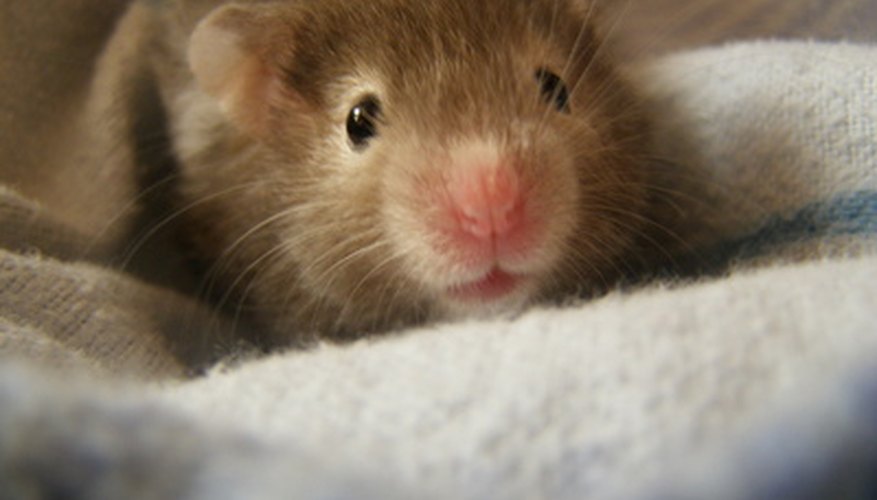As more veterinarians increasingly focus on the small animal pet population, more diseases once thought to be exclusive to humans and dogs are being diagnosed within the hamster world. From cancer to skin infections to diseases that affect internal organs, the advancement of medical treatments for hamsters is on the rise. Only skilled veterinarians who specialise in exotic and non-traditional pets will be able to properly diagnose a condition as serious as Cushing's disease, which involves a life-altering tumour.
Identification
Cushing's disease, which is also known as hyperadrenocorticism, is essentially a tumour of the pituitary gland that affects hormonal functions. The presence of the tumour causes an overproduction of cortisol, which in turn leads to an increased level of glucocorticoid hormones. Seen often in dogs, the disease is also being diagnosed among the pet hamster community.
Effects
According to HamsterCentral.com, some of the most prominent symptoms of Cushing's disease in hamsters include weight loss, hair loss (particularly on the hamster's undercarriage, near its hip scent glands or above its tail), dry and flaky skin, loss of skeletal muscles, increased thirst and urine output, and dark pigment patches on the skin.
- As more veterinarians increasingly focus on the small animal pet population, more diseases once thought to be exclusive to humans and dogs are being diagnosed within the hamster world.
- According to HamsterCentral.com, some of the most prominent symptoms of Cushing's disease in hamsters include weight loss, hair loss (particularly on the hamster's undercarriage, near its hip scent glands or above its tail), dry and flaky skin, loss of skeletal muscles, increased thirst and urine output, and dark pigment patches on the skin.
Time Frame
Hamsters tend to start showing signs of having Cushing's disease after the age of 1 year old, which is also when they start to enter their senior year. As with many hamster diseases, Cushing's tends to progress rapidly, most noticeably in the form of excessive hair loss. While the exact length of time a hamster can live with Cushing's is unknown, once the disease has been discovered, the owner can do things like provide extra bedding for their pet as they lose hair.
Considerations
The symptoms of Cushing's disease mimic those of other diseases, so often proper diagnosis is not made until the disease is advanced. For example, increased water intake and urine output are also symptoms of kidney disease and diabetes, while excessive hair loss is often immediately attributed to parasitic infestations, such as those brought on by mites or mange.
Warning
Hamsters have extremely short lifespans, and the best thing a pet owner can do is to observe their hamster closely and immediately report any changes in appearance or behaviour to a veterinarian. Disease tends to progress rapidly among these rodents, and even if a cure is not available, palliative care often is. This can help prolong and improve the quality of the life the hamster has left.
- Hamsters tend to start showing signs of having Cushing's disease after the age of 1 year old, which is also when they start to enter their senior year.
- Hamsters have extremely short lifespans, and the best thing a pet owner can do is to observe their hamster closely and immediately report any changes in appearance or behaviour to a veterinarian.
